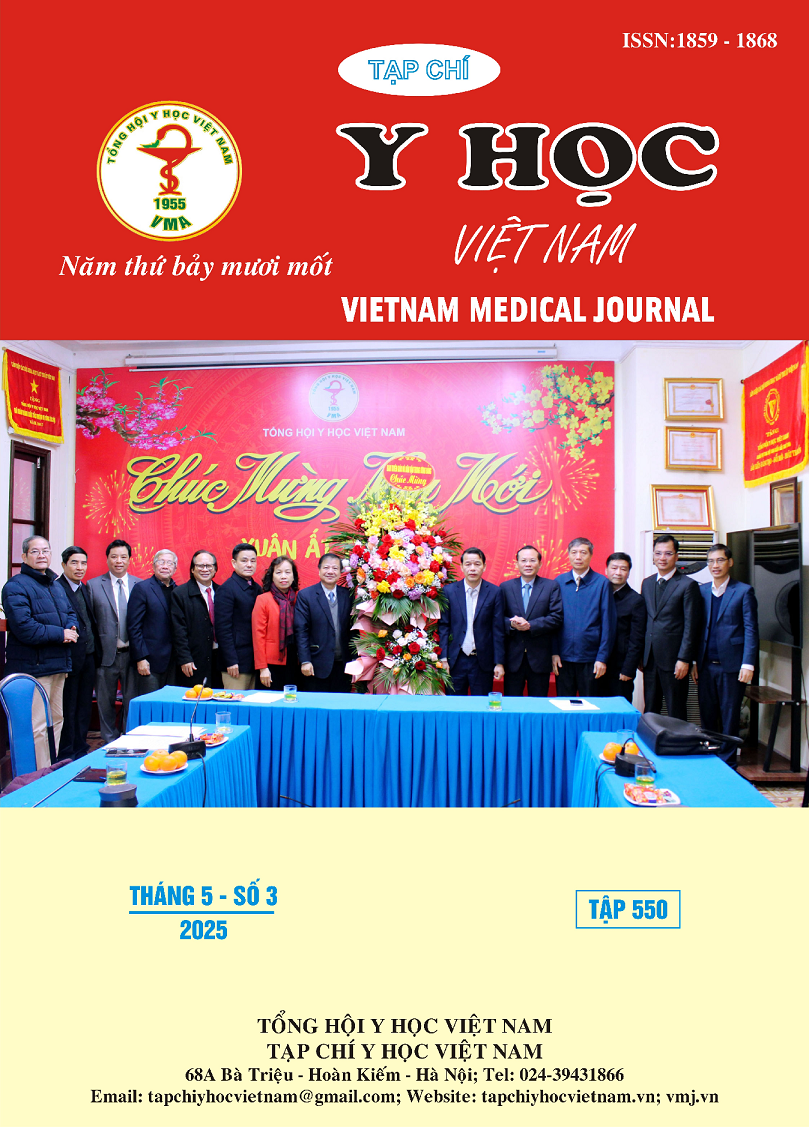STUDY ON SHADE CONVERSION BETWEEN CLASSICAL AND 3D DENTAL SHADE GUIDES
Main Article Content
Abstract
Objective: In this study, we utilized a colorimeter to measure the CIELAB parameters (L, a, b) of two conventional dental shade guide systems, namely the Classical and 3D-Master systems, with the additional inclusion of bleaching shade guides. We developed a conversion chart for 3D-Master shades to Classical, Bleach VITA, and Bleach Ivoclar systems based on these measurements. This chart aims to facilitate accurate shade conversion for dentists and dental technicians, ensuring precise color selection without compromising accuracy when transitioning from the VITA 3D-Master system to the VITA Classical system. Methods: This in-vitro study was conducted using two standardized shade guides: Vita Classical (16 shades) and Vita System 3D-Master (26 shades), as well as bleaching shade guides Bleach VITA (3 shades) and Bleach Ivoclar (4 shades). Each shade tab's CIELAB parameters (L, a, b) were measured at room temperature using a colorimeter, with measurements taken at the middle third of the tooth. Each shade was measured ten times against a gray background, and the recorded values were used to calculate and compare the ΔE values of corresponding shades between the two systems. Results: Among the 26 shades in the 3D-Master guide, 11 had corresponding shades in the Classical guide, primarily concentrated in the three brightest tone groups (1M, 2M, and 3M). Similarly, 12 out of 16 shades in the Classical guide had corresponding shades in the 3D-Master guide. Regarding the bleaching shade guides, only shade 0M3 in the VITA system exhibited a comparable match with BL3 and BL4 shades in the Ivoclar system. Conclusions: This study provides a conversion table of the two most popular color shade guides in dentistry, expanding the bleaching color as a reference for dentists and dental technicians to record and compare tooth color in the clinic and in the laboratory in the most accurate and convenient way.
Article Details
Keywords
tooth shade guide, bleaching, conversion, color space, colorimeter
References
2. Villarroel M, Fahl N, De Sousa AM, de Oliveira OB. Direct esthetic restorations based on translucency and opacity of composite resins. Journal of Esthetic and Restorative Dentistry. 2011;23(2):73-87.
3. Nam HCN, Thoại KQ. Đối chiếu độ trong mờ giữa hệ thống so màu cổ điển và 3D trong nha khoa. Tạp chí Y học Việt Nam. 2024;545(2):313-18.
4. Lehmann KM, Devigus A, Igiel C, Wentaschek S, Azar MS, Scheller H. Repeatability of color-measuring devices. Eur J Esthet Dent. 2011;6(4):428-35.
5. Zenthöfer A, Wiesberg S, Hildenbrandt A, Reinelt G, Rammelsberg P, Hassel AJ. Selecting VITA classical shades with the VITA 3D-master shade guide. Int J Prosthodont. 2014;27(4):376-82.
6. Hassel AJ, Zenthöfer A, Corcodel N, Hildenbrandt A, Reinelt G, Wiesberg S. Determination of VITA Classical shades with the 3D-Master shade guide. Acta Odontologica Scandinavica. 2013;71(3-4):721-726.
7. Rahbani Nobar B, Tabatabaian F, Namdari M. Can identical dental shade guides be used interchangeably? Journal of Esthetic and Restorative Dentistry. 2021;33(8):1150-1159.
8. Ghinea R, Pérez MM, Herrera LJ, Rivas MJ, Yebra A, Paravina RD. Color difference thresholds in dental ceramics. Journal of dentistry. 2010;38:e57-e64.


